|
Ferrari World Abu Dhabi’s Mission Ferrari opened to the public to much fanfare in January. Holovis’s James Lodder shares a decade-long journey to realise this incredible immersive rollercoaster experience

Tom Anstey | Planet Attractions | 20 Mar 2023
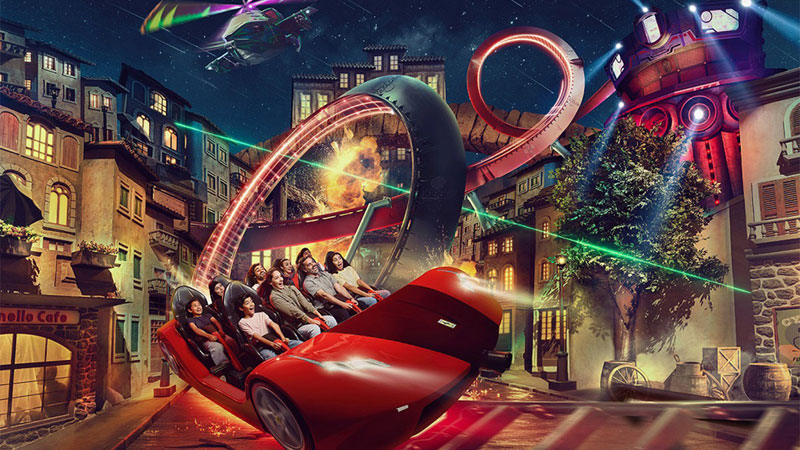
 Mission Ferrari is a state-of-the-art SFX story coaster Credit: Ferrari World Mission Ferrari is a state-of-the-art SFX story coaster Credit: Ferrari World
It’s going to be a bumper year for Holovis.
Already launching major projects in 2023, the experiential design firm, has one project in particular that has been making waves - Mission Ferrari.
A new attraction at Ferrari World Abu Dhabi, the 5D “immersive mega coaster” opened to the public in January and was developed by Holovis alongside Dynamic Attractions and the Qiguang Group.
Featuring a world-first sideways coaster drop, an inverted loop and state-of-the-art special effects, the story coaster - an indoor/outdoor ride - covers 1,778ft (542m) of track and reaches speeds of up to 44.7mph (72kmph). Mission Ferrari also features five LSM launches.
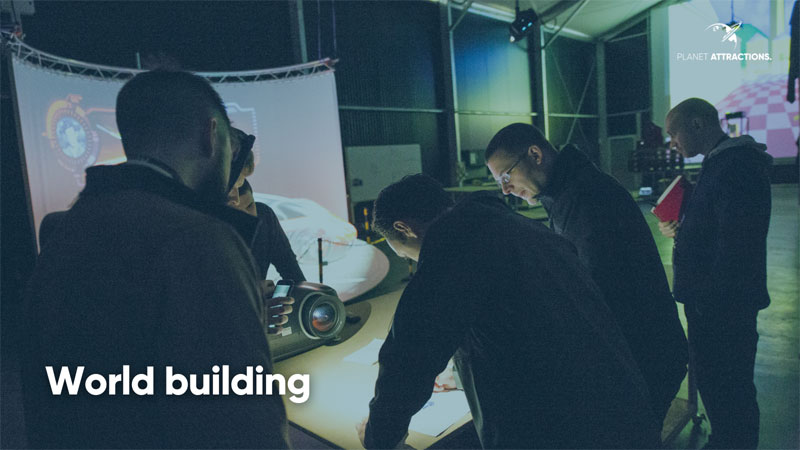
Holovis played a significant role in the project, handling the guest experience and building an AV show around the ride itself.
Not like any coaster or dark ride experience to come before it, Mission Ferrari stands out in a category of its own making. In the works for a decade, James Lodder, engineering director at Holovis, has been working on the project since its inception.
“It's not a traditional dark ride - it's a dark coaster,” he says, speaking to Planet Attractions.
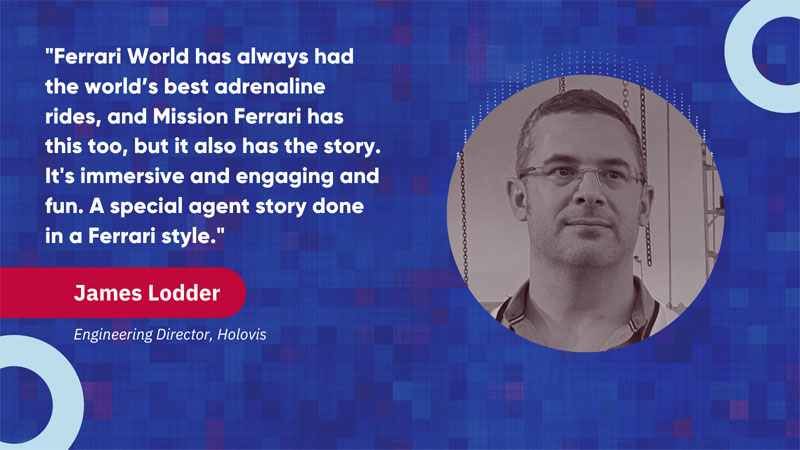
“It's a high adrenaline experience - it goes upside down. There are trick switches, and it does some very cool stuff for a coaster. Ferrari World has always had the world’s best adrenaline rides, and Mission Ferrari has this too, but it also has the story. It's immersive and engaging and fun. A special agent story done in a Ferrari style.”
As soon as the guest enters the building, right from the pre-show, the attraction is highly themed.
“There's a huge amount of effort that goes into transporting you into that realm,” explains Lodder. “You're in the world of Ferrari, but you're in a spycraft world and you're getting ready for your mission.
“On the ride, our show systems reveal the story scene by scene with dozens of projectors blended onto curved surfaces and wraparound screens to immerse the guests in the centre of the action.”
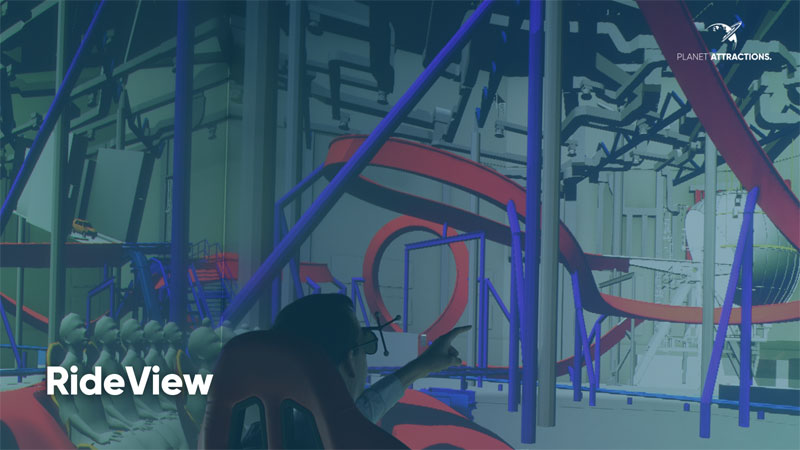
Holovis achieved this stunning feat with its RideView technology - a real time experiential simulation software running in a virtual reality cave environment - to deliver an accurate replica of the final guest experience long before the coaster was complete. Wearing 3D glasses in the environment, Lodder describes the space as a “hologram room”.
“Right back at the start when the ridebox was a construction site, all you could see on site was concrete footings and piles of steel. You couldn’t yet see the shape of the track or get any kind of feel for how the guest experience might play out.” he says.
“But we could import the 3D CAD of the track into our VR cave and animate the ride vehicle to send it around the track. We set up the linear motors and brake zones, and then the RideView physics model calculates the correct speeds and timings around the lap. We had a couple of race seats to sit in, to get your eyepoint in the right place. And then you turn 3D and head-tracking on, and you can ride the ride in this virtual environment, with the true-to-life motion and with the digital media playing on the virtual screens. RideView is an amazing creative development tool. It lets us test story ideas to find out what works and what doesn’t, even before the coaster was built.”
During the development process, the Holovis team spoke to the ride’s manufacturers about the different elements of the rollercoaster journey itself, working with them on where elements of the story could and would take place. Miral, the owners of Yas Island, the home of Ferrari World, also sent a creative team to work with Holovis on the process.
One of the big things, according to Lodder, during the development process was that from a creative perspective, Miral was willing to prioritise the story ahead of everything else. “That's quite unusual. So that's cool,” he says.
“We would sit together with George Walker, creative director for Ferrari World, in the cave and just ride the ride over and over. We started riffing on George’s ideas, and from that came the scripts and the storyboards.”
In the virtual cave the output was simplistic in places. The first time the ride’s launch scene was discussed, elements such as a helicopter or rocket launches were represented by the words themselves rather than a full animation. At this stage these elements were placed to get the timing right with the ride experience to sync the heartbeat of the immersive story. This also helped to speed up and simplify things when changes needed to be made, either to the story or the mechanics of the ride itself.
“There were times when things just worked, and there were times when we had problems,” says Lodder. “One scene, for example, went by too quickly to do the thing we wanted. So we called Dynamic and said, ‘can you move these linear motors and change the ride profile to help the story?’ So there's a place now in the ride early on when the vehicle goes into reverse. First we roll past the scene and then the on-screen character says ‘oh, hey, come back’, and the vehicle comes back. This works well.
Through this method of storyboarding and trial and error, Holovis was able to focus first on the story and the guest experience, rather than building a story around a prefabricated ride.
“It takes a lot of time to create world-class content, and you don’t always get a chance to fully test the story until you’re allowed to ride the ride, which sometimes is only days before soft opening,” says Lodder. “If we want to make changes there’s no time for a do-over, so we have to hack and chop what we can in the time we have. But on Mission Ferrari we got to do things in a much better way, and it was absolutely fantastic going through that and seeing how the creative guys couldn't get enough of the cave and the process. I really enjoyed this, and I’m so, so pleased with the quality of the experience we delivered.”
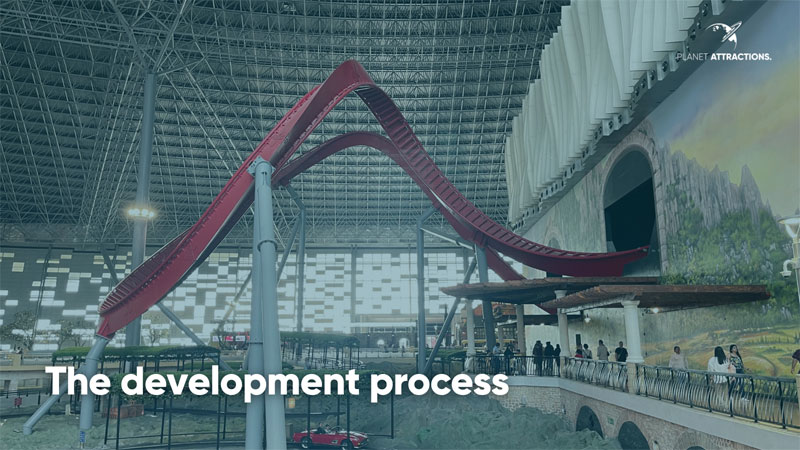
Before the cave was even a factor, the basics had to be established. Starting off with the base model, Holovis was able to adjust the design to accommodate its overall needs, making room for the AV equipment that makes this ride so special.
“What coaster manufacturers tend to do is they run the track around the perimeter of the space, because you get more track that way. We asked them to bring it in away from the walls so we had room to wrap the track in the AV and theming,” explains Lodder.
“This gave us the space to set one of the key scenes in a giant dome, which is really immersive. Most dome screens are shallow like contact lenses. Some wrap around 180 degrees, a hemisphere. But this dome comes right around to 230 degrees. So when the huge ride vehicle rolls into the dome, the show is all the way around you and behind you and above you.
“The coaster team gave us their CAD and we gave them back our suggested tweaks. ‘Can you make this work, does it work with the dynamics?’ They were keen to lock down the track layout early on, but after that we continued working with them on the vehicle timings, speeds and pause times, media trigger points and things like that.”
While the ride system and the track was developed by Dynamic Attractions, Holovis technology was integrated into the vehicles, including onboard audio with a stereo pair of speakers in every seat.
Holovis built full-scale physical mockups of key parts of the preshow and ride scenes at the Holovis factory, so that the digital media could be reviewed and refined in-house using the actual AV hardware with the correct view distances and eyepoints.
“It was basically dialling everything in ages before it needed to be there on-site so that we could figure out what worked, double down on it and figure out what wasn't so good and then change that or fix it,” says Lodder.
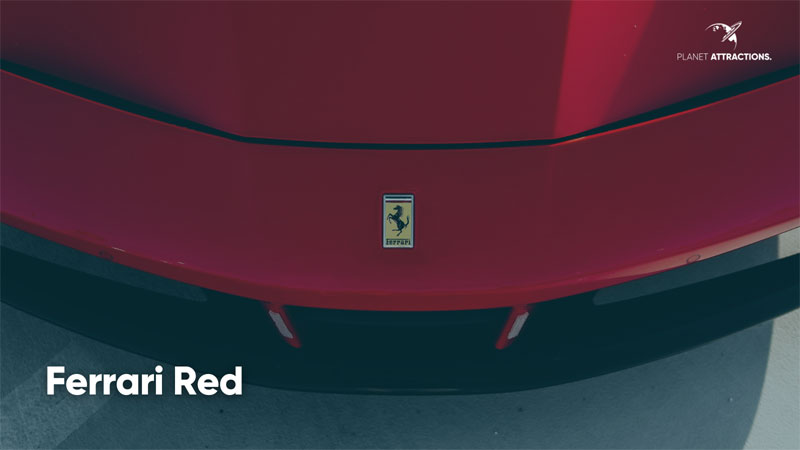
Of course one of the key things that had to be perfect in the attraction was the presentation of the Ferrari brand. From the exact shade of red to the positioning of the logo, to the tone of the story, everything was reviewed and considered.
“We got some good feedback from Ferrari,” says Lodder. “The iconic ‘Cavallino Rampante’ always faces to the left, for example. Never to the right. We had to fix that. But in general Ferrari were willing to let us go and have fun with this, which was great.
“It's a light-hearted story, not serious. There are a whole bunch of jokes and references that you’ll think might be inspired by the likes of James Bond or Jason Bourne. Ferrari were fine with this, and we didn't have to make changes to the story that we were going for.”
And now it’s open to the public what does Lodder think of the final product and how is the public reacting?
“I would love to just stand outside Mission Ferrari all afternoon and listen to what people are saying as they're walking out of the exit,” he says.
“Recently I was there with Holovis CEO, Stuart Hetherington, and George Walker. A kid came by with his mum and he was super excited and we had a little chat with him. It’s a great feeling to know that something we’ve worked so hard on, can make people so happy.
“My thanks go to Dave Reynolds, Richard Wingfield, Alex Kiss, Amy Steele, and our entire Holovis Abu Dhabi team for their excellent work to make Mission Ferrari into such a fantastic immersive experience.”
Suppliers
|
|






Supplier Showcase 2025: The biggest attractions projects landing worldwide this year
|